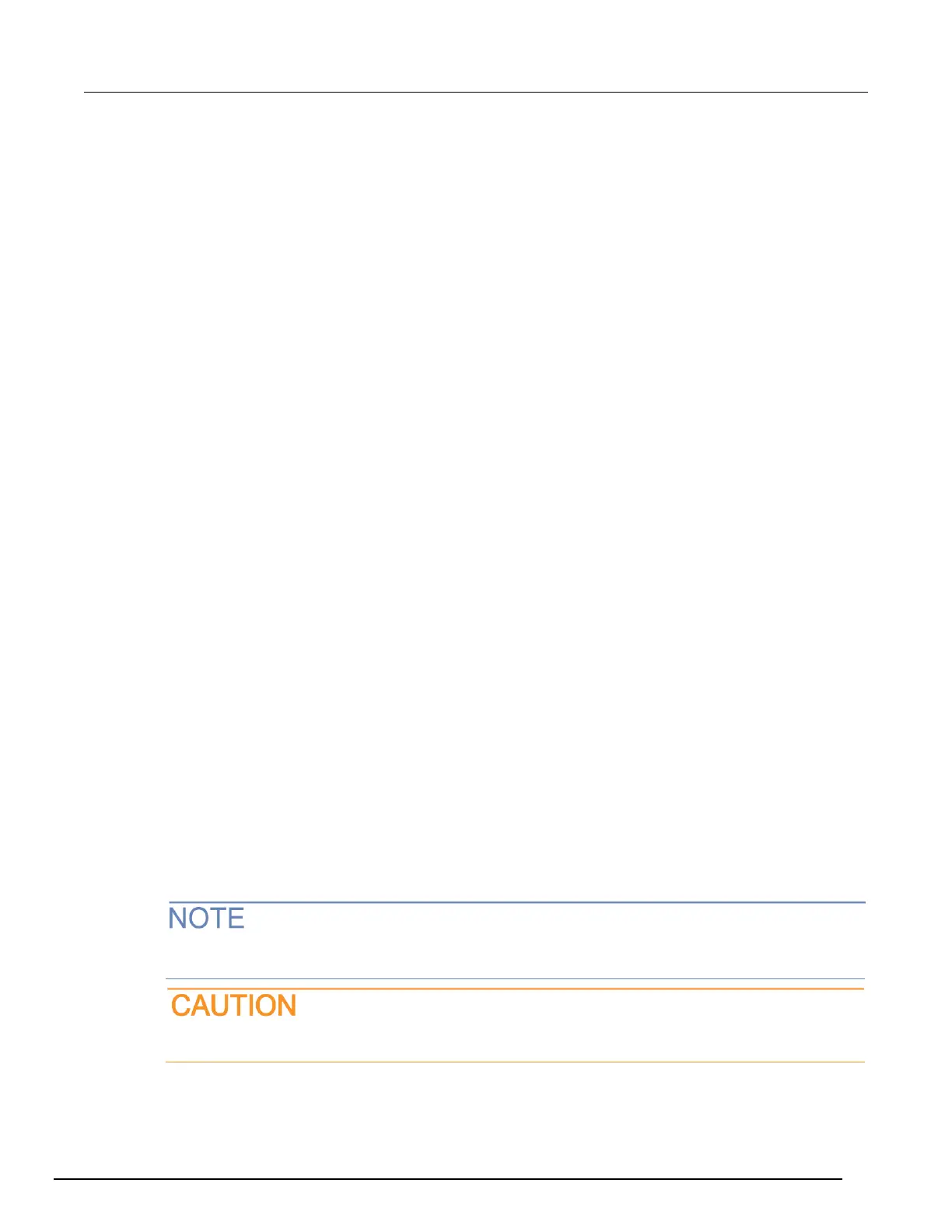Series 3700A System Switch/Multimeter Reference Manual Section 4: Basic DMM operation
3700AS-901-01 Rev. D/June 2018 4-41
Example 2
Calculate the resistance of a D100 RTD at –100 °C (T). The following R
0
(Ω at 0 °C), alpha, beta, and
delta values are used for the D100 RTD:
T = –100 °C
R0 (Ω at 0 °C) = 100 Ω
alpha = 0.003920
beta = 0.10630
delta = 1.49710
Using the above alpha and delta values, A and B are calculated as follows:
= 0.003920 [1 + (1.49710/100)]
= –1 (0.003920)(1.49710)(1e-4)
= –1 (0.003920)(0.10630)(1e-8)
The resistance of the RTD at –100 °C (R
100
) is then calculated as follows:
= R
0
[1 + AT + BT
2
+ CT
3
(T-100)]
= 100 {1 + [(0.003978686)(–100)] + [(–5.868632e-7)(–100
2
)] + [(–4.16696e-12)(–100
3
)](–100 –
100)}
= 100 [1 + (–0.3978686) + (–0.005868632) + (0.000833392)]
Frequency and period measurements
The Series 3700A is specified for frequency measurements from 3 Hz to 500 kHz on voltage ranges
of 100 mV, 1 V, 10 V, 100 V, and 300 V. Period (1/ frequency) measurements can be taken from 2 s
to 333 ms on the same voltage ranges as the frequency.
The input impedance is 1 MΩ || less than 100 pF, AC coupled.
The instrument uses the volts input to measure frequency. The AC voltage range can be changed
with the RANGE ▼ and ▲ keys. The signal voltage must be greater than 10% of the full-scale range.
Frequency or period measurements as low as 0.5 Hz (2 seconds) and less than or equal to 1 MHz
(1 µs) are possible but depend on the selected range.
Do not apply more than maximum input levels indicated or instrument damage may occur.
The voltage limit is subject to the 8 x 10
7
VHz product.

